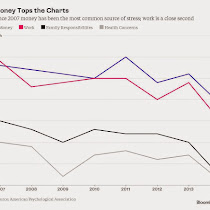But a new study by Sunyoung Lee (University College, London), Marko Pitesa (University of Maryland), Madan Pillutla (London Business School), and Stefan Thau (INSEAD, Singapore), suggests that attractiveness is not always an asset in the workplace. They argue that a job candidate's perceived competence is tied to:
- diffuse status characteristics such as gender (men are generally seen as more competent than women) and attractiveness (more attractive individuals enjoy higher status in society, and are therefore seen as more competent).
- the organizational context: when one employee's success positively affects another employee's success (cooperative interdependence), the person making hiring decisions will be motivated to select the candidate seen as the most competent because this candidate would be the most instrumental to personal outcomes. However, when one employee's success negatively affects another employee's success (competitive interdependence), the decision-maker will be motivated not to select the most competent candidate, because such a person would represent the most capable competitor to the detriment of the decision-maker's interest.
Using four experiments using different samples, selection tasks, manipulations of candidate attractiveness, and manipulations of interdependence, they tested the following four hypotheses:
- Decision makers perceive attractive male, but not female, candidates, as more competent.
- When decision makers expect to cooperate with the candidate, they prefer an attractive to an unattractive male, but not female, candidate.
- When decision makers expect to compete with the candidate, they prefer an unattractive to an attractive male, but not female, candidate.
- Higher perceived competence of attractive male candidates leads to a higher (lower) relative perceived instrumentality of the attractive candidate to the decision maker when cooperation (competition) is expected, in turn resulting in a higher (lower) selection preference for the attractive candidate.
The results of the experiments support the researchers' hypotheses: "Decision-makers associate attractiveness with competence in male, but not female candidates." In addition, "cooperative and competitive interdependence result in opposing patterns of attractiveness discrimination. When decision-makers expect to cooperate with the candidate, they perceive attractive male candidates as more capable cooperators and discriminate in their favor. When decision-makers expect to compete with the candidate, they perceive male candidates as more capable competitors and discriminate against them."
Read more:
http://www.npr.org/2015/04/20/400929847/why-handsome-men-may-be-at-a-disadvantage-when-it-comes-to-hiring
http://www.sciencedirect.com/science/article/pii/S0749597815000096









No comments :
Post a Comment